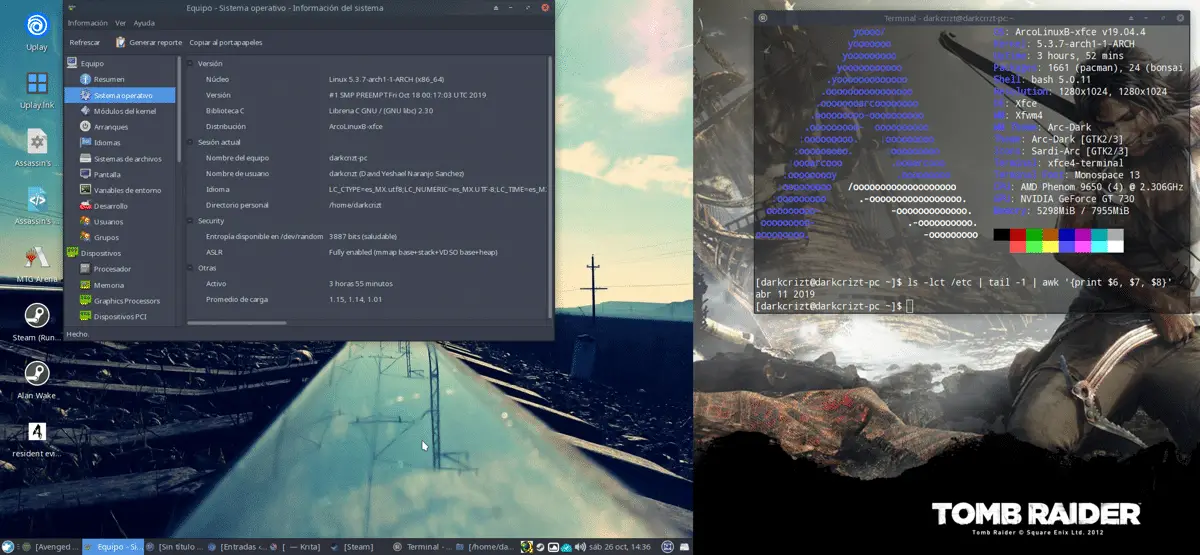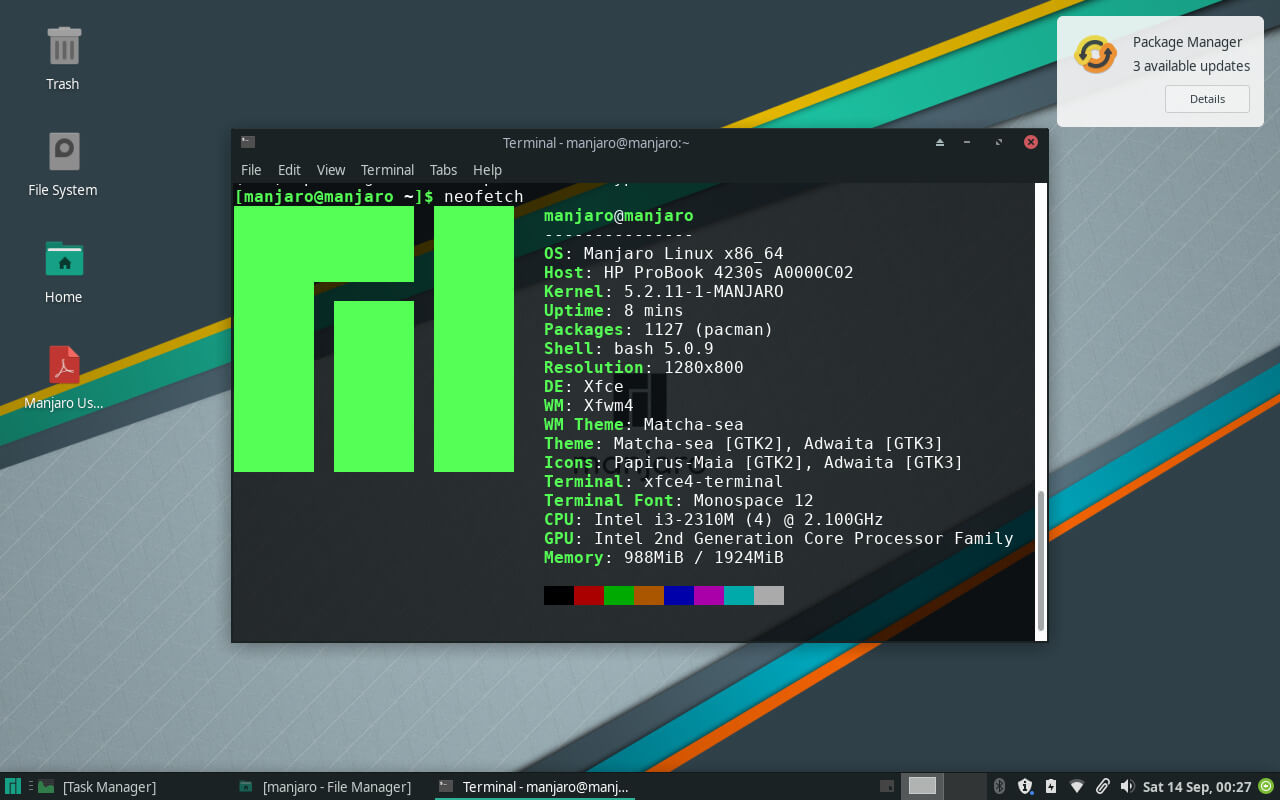Arch Linux vs. Manjaro: The Impact of User-Friendliness on Performance

Arch Linux and Manjaro are both popular Linux distributions known for their flexibility and customization options. However, they differ significantly in terms of user-friendliness, which can have a noticeable impact on performance.

Arch Linux: Minimalist and Performance-Centric

Arch Linux is a lightweight distribution designed for experienced users. It offers a bare-bones installation with minimal pre-configured software, giving users complete control over their system. This approach promotes system stability and optimizes performance by eliminating unnecessary processes and services.
Manjaro: User-Friendly and Feature-Rich
Manjaro, on the other hand, is designed to make Linux more accessible to newcomers. It provides a user-friendly graphical installer, pre-installed essential software, and an active community that offers support. These features simplify setup and maintenance, but they can also add additional overhead to the system.
Impact on Performance
The user-friendly enhancements in Manjaro can affect performance in several ways:
- Startup Time: Manjaro’s pre-installed software and services can increase the system’s startup time compared to Arch Linux.
- Background Processes: Manjaro runs more background processes by default, such as graphical services and updates, which can consume system resources.
- Resource Usage: The additional software and services can also increase overall RAM and CPU usage, potentially impacting the performance of other applications.
However, it’s important to note that these effects may be negligible for most users. The performance difference between Arch Linux and Manjaro is likely to be noticeable only in resource-intensive tasks or for systems with limited hardware.
Conclusion
Ultimately, the choice between Arch Linux and Manjaro depends on individual preferences and use cases. If performance is a top priority, Arch Linux’s minimal approach provides an edge. For users who value ease of use and a more out-of-the-box experience, Manjaro is an excellent option. Both distributions offer high levels of customization and flexibility, allowing users to tailor them to their specific needs and preferences.## Arch Linux Vs. Manjaro: The Impact Of User-friendliness On Performance
Executive Summary
Arch Linux and Manjaro are both popular Linux distros that offer different approaches to user-friendliness and performance. Arch Linux is known for its minimalist design that gives users complete control over their system, while Manjaro offers a more user-friendly experience with pre-configured settings and a more accessible GUI. While Arch Linux tends to be favored by experienced users who value flexibility, Manjaro is a more accessible option for beginners and those who prioritize ease of use. Ultimately, the choice between Arch Linux and Manjaro depends on the individual user’s needs and preferences.
Introduction
Arch Linux and Manjaro are two of the most popular Linux distros available today. Both offer a wide array of features and applications, but they take different approaches to user-friendliness and performance. Arch Linux is a rolling release distro that offers a high degree of customization and flexibility, while Manjaro is a more user-friendly distro that offers a more stable experience. In this article, we will compare Arch Linux and Manjaro and discuss the impact that user-friendliness has on performance.
Arch Linux
Arch Linux is a minimalist, general-purpose Linux distro that is known for its simple design and user-friendliness. Arch Linux is a rolling release distro, which means that it is constantly updated with the latest software and security patches. This makes Arch Linux a great choice for users who want to have the latest and greatest software available. However, Arch Linux can also be quite challenging to install and configure, especially for beginners.
Advantages
- Rolling release distro ensures latest software and security patches
- User-friendly interface makes it easy to use
- Arch User Repository offers a wide array of software packages
Manjaro
Manjaro is a user-friendly Linux distro that uses Arch Linux as its base. Manjaro offers the same advantages as Arch Linux, such as rolling releases and a wide array of software packages. However, Manjaro also includes a number of features that make it easier to install and configure than Arch Linux. These features include a graphical installer, a user-friendly desktop environment, and a number of pre-installed applications.
Advantages
- Based on Arch Linux, providing access to a wide array of software packages
- Rolling release distro ensures latest software and security patches
- User-friendly desktop environment and graphical installer make it easy to use
- Auto-detection of graphics drivers streamlines the installation process
Comparison of User-friendliness and Performance
When it comes to comparing the user-friendliness of Arch Linux and Manjaro, Manjaro is clearly the easier distro to use. Manjaro’s graphical installer makes it easy to install the distro, and the pre-installed applications and desktop environment make it easy to get started. Arch Linux, on the other hand, can be quite challenging to install and configure, especially for beginners.
In terms of performance, Arch Linux and Manjaro are very similar. Both distros are based on the Linux kernel, and they both offer a wide range of hardware support. Arch Linux may have a slight edge in performance, because it uses a more minimal desktop environment. However, the difference in performance is likely to be negligible for most users.
Conclusion
Ultimately, the choice between Arch Linux and Manjaro depends on the individual user’s needs and preferences. Arch Linux is a great choice for users who want a flexible and customizable distro that offers the latest software and security patches. Manjaro is a great choice for users who want a user-friendly distro that is easy to install and configure.
Keyword Phrase Tags
- Arch Linux vs. Manjaro
- User-friendliness
- Performance
- Rolling release distro
- Graphical installer

This is really amazing. I’m a Linux beginner and I found Manjaro to be perfect for me. The user-friendliness is top-notch and it’s made my transition easy
This article is kind of biased towards Manjaro. Arch Linux has always been my favorite and I find it much more stable than Manjaro
The impact of user-friendliness on performance is undeniable. Manjaro’s ease of use comes with a slight performance trade-off, while Arch Linux’s greater control allows for more efficient system optimization
I agree with the argument that Arch Linux requires a higher level of technical skill. But for those who are willing to invest the time and effort, it’s a rewarding experience
Well, well, well…looks like Manjaro is the training wheels for Linux newbies, while Arch Linux is the real deal for us experienced users
The comparison is valid but I wouldn’t say Manjaro is the only user-friendly distro. There’s also Ubuntu, Linux Mint, and Fedora, each with their own strengths
Arch Linux users be like: ‘I’m not just a user, I’m a system architect!’ 😂
Can you provide some more insights into how the different levels of customization impact the performance of these distributions
I’m not sure if I completely agree with the article’s stance. I’ve used both Manjaro and Arch Linux and found Manjaro to be more stable in some cases
It’s important to remember that both Manjaro and Arch Linux are great choices for different users. The decision depends on one’s technical expertise and preferences
I’ve always been a fan of Arch Linux. The sense of accomplishment you get from building your system from scratch is unmatched
I’m new to Linux and I’m not sure which distro to choose. This article has been really helpful in understanding the key differences
I think the performance impact is overstated. With proper configuration, Arch Linux can perform just as well as Manjaro
It’s a matter of balancing user-friendliness and performance. Manjaro offers a more convenient experience, while Arch Linux gives you more control
Don’t forget about security. I find Arch Linux to be more secure because of its rolling release model